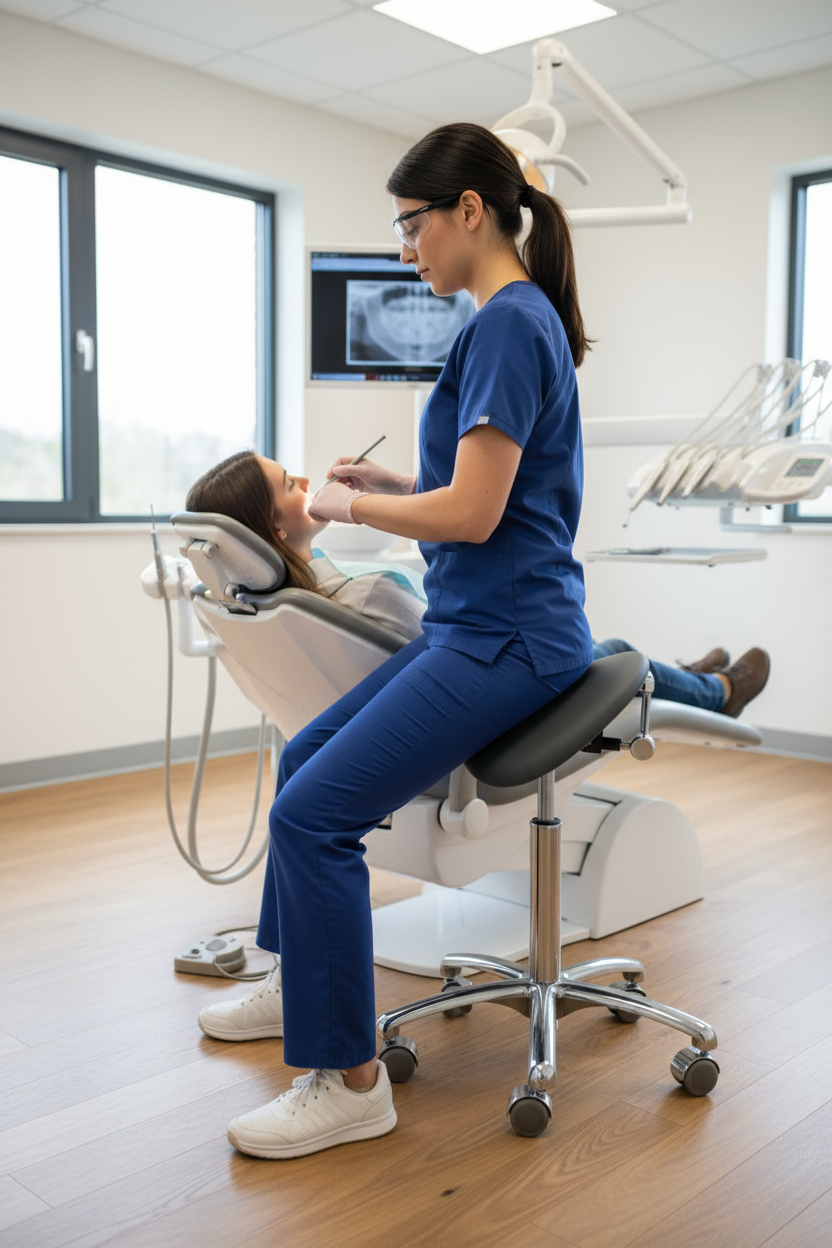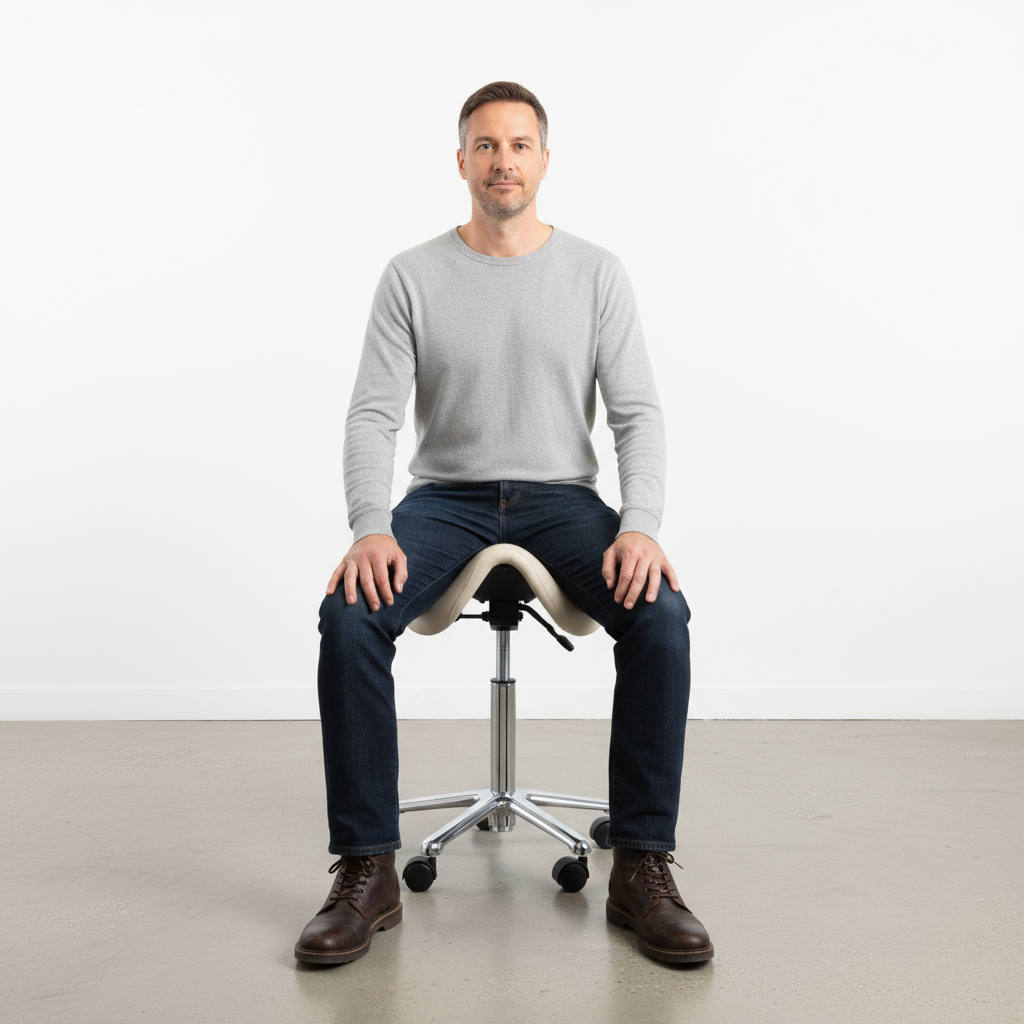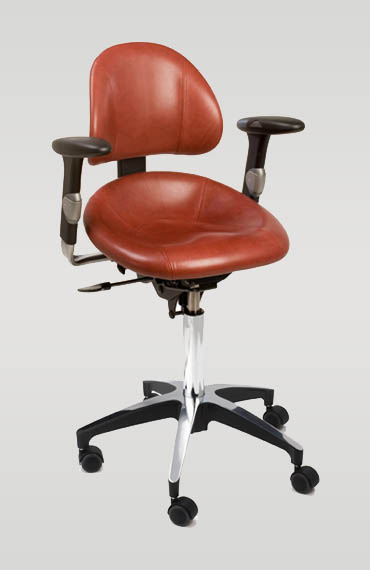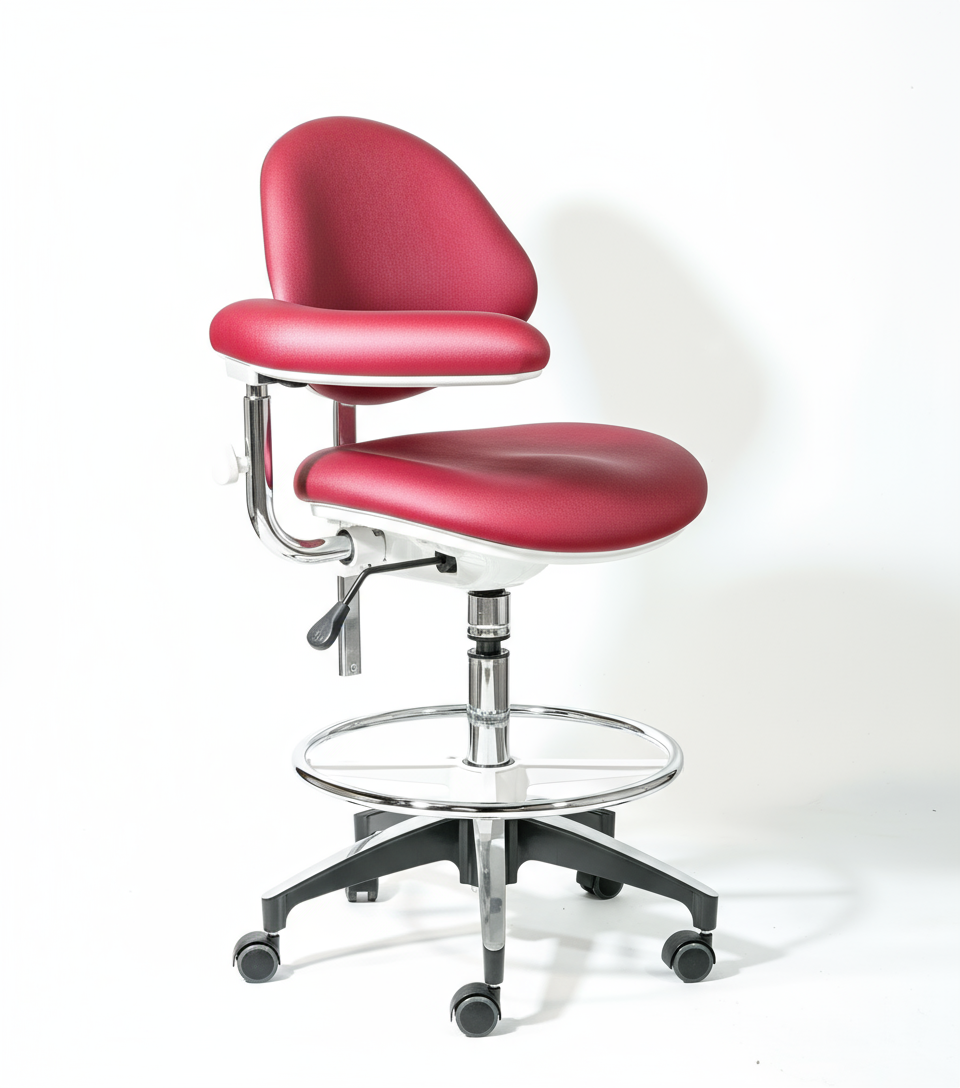Share
Why Dentists and Hygienists are Switching to This Ancient Seating Style
The surprising seating revolution happening in dental offices everywhere
Dr. Sarah Mitchell, DDS, used to end every workday with excruciating lower back pain. Despite investing in expensive ergonomic office chairs and trying every adjustment possible, she found herself dreading long procedures. Then she discovered something that changed everything—a piece of equipment that solved not only her pain problem but actually made her a better dentist. That equipment? A saddle chair inspired by centuries of horseback riding wisdom.
Dr. Mitchell's story isn't unique. Across the country, dental professionals are making a surprising switch from traditional office seating to saddle chairs designed specifically for dentists. This isn't just another ergonomic trend—it's a fundamental reimagining of how precision professionals should sit, based on principles that riders have used for millennia.
But why are healthcare professionals, who spend their days focused on precision and patient care, turning to a seating style that dates back to ancient civilizations? The answer lies in the unique physical demands of dental work and the remarkable way saddle seating addresses them.
The Hidden Physical Toll of Dental Practice
Dental professionals face ergonomic challenges that most office workers never encounter. Consider the typical day of a dental hygienist or dentist:
- Hours spent leaning forward in awkward positions to access the patient's mouth
- Constant need to shift between different angles and heights
- Precise hand movements requiring steady body positioning
- Extended periods maintaining uncomfortable neck and shoulder positions
- Frequent movement between patients, requiring quick repositioning
Traditional office chairs, even "ergonomic" ones, simply weren't designed for this type of work. They assume you'll sit upright, facing forward, with both feet flat on the floor—none of which applies to dental procedures.
The Statistics Are Alarming
Research from the American Dental Association reveals that over 80% of dental professionals experience work-related musculoskeletal pain, with lower back pain being the most common complaint. Even more concerning, many practitioners report that pain affects their ability to perform precise procedures—directly impacting patient care quality.
Enter the Ancient Solution: Saddle Seating Principles
The concept of saddle seating traces its roots back thousands of years to when humans first began riding horses. The saddle design wasn't arbitrary—it evolved to provide optimal positioning for precision control while maintaining comfort during long periods of activity. The wide, contoured seat distributed weight effectively, the elevated position provided clear sightlines, and the open leg position allowed for quick, fluid movement.
These same principles that made saddle design perfect for riding translate remarkably well to dental work:
Optimal Positioning for Precision
Just as riders need precise control over their horses, dental professionals require exact positioning for detailed work. The saddle chair's design naturally places the pelvis in an optimal position, allowing the spine to maintain its natural curves while enabling the forward lean necessary for dental procedures.
Enhanced Mobility and Access
The wide-set leg position of saddle seating allows dental professionals to get closer to patients and move more freely around the dental chair. This improved access reduces the need for awkward stretching and uncomfortable positioning that traditional chairs force.
Active Core Engagement
Unlike traditional chairs that support the back passively, saddle chairs for dental hygienists require active core engagement. This strengthens the practitioner's natural support system over time, reducing fatigue and improving stamina during long procedures.
Real-World Results from Dental Professionals
The switch to saddle seating isn't just theoretical—dental professionals across the country are reporting dramatic improvements in both their health and their practice quality.
"My Back Pain Disappeared Within Weeks"
"After 15 years of chronic lower back pain, I was considering cutting back my hours. Three weeks after switching to a saddle stool, the pain was gone. Now I can do back-to-back root canals without any discomfort. My precision has actually improved because I'm not constantly shifting to relieve pain." - Dr. Michael Chen, Endodontist
"Better Patient Care Through Better Posture"
"The improved access and stability I get with my saddle chair means I can maintain optimal positioning throughout entire procedures. My patients comment that my cleanings are more thorough, and I finish feeling energized rather than exhausted." - Lisa Rodriguez, RDH
These aren't isolated cases. Dental practices that have made the switch to ergonomic saddle stools report improved staff satisfaction, reduced sick days due to back pain, and enhanced quality of patient care.
The Science Behind the Switch
Recent ergonomic research specifically focused on dental professionals validates what practitioners are experiencing firsthand. Studies published in the Journal of Dental Hygiene have found that saddle chairs significantly reduce:
- Lower back stress by maintaining natural spinal curves during forward-leaning work
- Hip flexor tightness through the open hip angle positioning
- Neck and shoulder strain by improving overall posture and reducing compensatory movements
- Circulation problems in the legs by eliminating pressure on the posterior thigh
- Core muscle atrophy through continuous gentle engagement
Perhaps most importantly, the research shows that these benefits don't just improve practitioner health—they directly translate to better patient outcomes through improved precision and reduced fatigue.
Making the Transition: What Dental Professionals Need to Know
The switch to saddle seating isn't just about buying a new chair—it's about fundamentally changing how you approach your work posture. Here's what dental professionals should expect:
Initial Adaptation Period
Most practitioners experience some initial core muscle fatigue as their body adjusts to active sitting. This typically resolves within 2-3 weeks as core strength improves. Start by using the saddle chair for shorter procedures and gradually increase usage time.
Height and Positioning Adjustments
Proper saddle chair setup is crucial. The seat height should allow your thighs to slope slightly downward, creating an open hip angle of approximately 110-130 degrees. This positioning is key to achieving the ergonomic benefits.
Why Progressive Practices Are Leading the Way
Forward-thinking dental practices aren't waiting for the industry to catch up—they're implementing saddle seating now as a competitive advantage. These practices report:
- Improved staff retention due to reduced occupational discomfort
- Enhanced reputation for practitioner wellness and modern equipment
- Increased procedure efficiency from better positioning and less fatigue
- Reduced workers' compensation claims related to repetitive strain injuries
- Higher patient satisfaction scores due to more precise, comfortable treatments
The Future of Dental Practice Ergonomics
As awareness grows about the physical demands of dental work and the solutions available, saddle chairs are becoming standard equipment rather than specialty items. Dental schools are beginning to incorporate saddle seating into their ergonomics curricula, and professional associations are updating their guidelines to include active seating recommendations.
The question for dental professionals isn't whether saddle seating will become mainstream—it's whether you'll be an early adopter who benefits immediately, or wait until everyone else catches up.
Dr. Mitchell, the endodontist we met at the beginning, puts it simply: "I wish I had made this switch years ago. My back feels better, my work is more precise, and I actually look forward to long procedure days now. It's not just about comfort—it's about being able to practice at my best for decades to come."
The ancient wisdom of saddle design, refined for modern dental practice, offers a solution that's both revolutionary and time-tested. For dental professionals tired of choosing between comfort and precision, the answer has been there all along—it just took the right application to unlock its potential.
Your patients trust you with their health. Isn't it time you invested in seating that supports yours? The switch to saddle seating isn't just changing how dental professionals sit—it's changing how they practice, how they feel, and how long they can continue doing the work they love.




